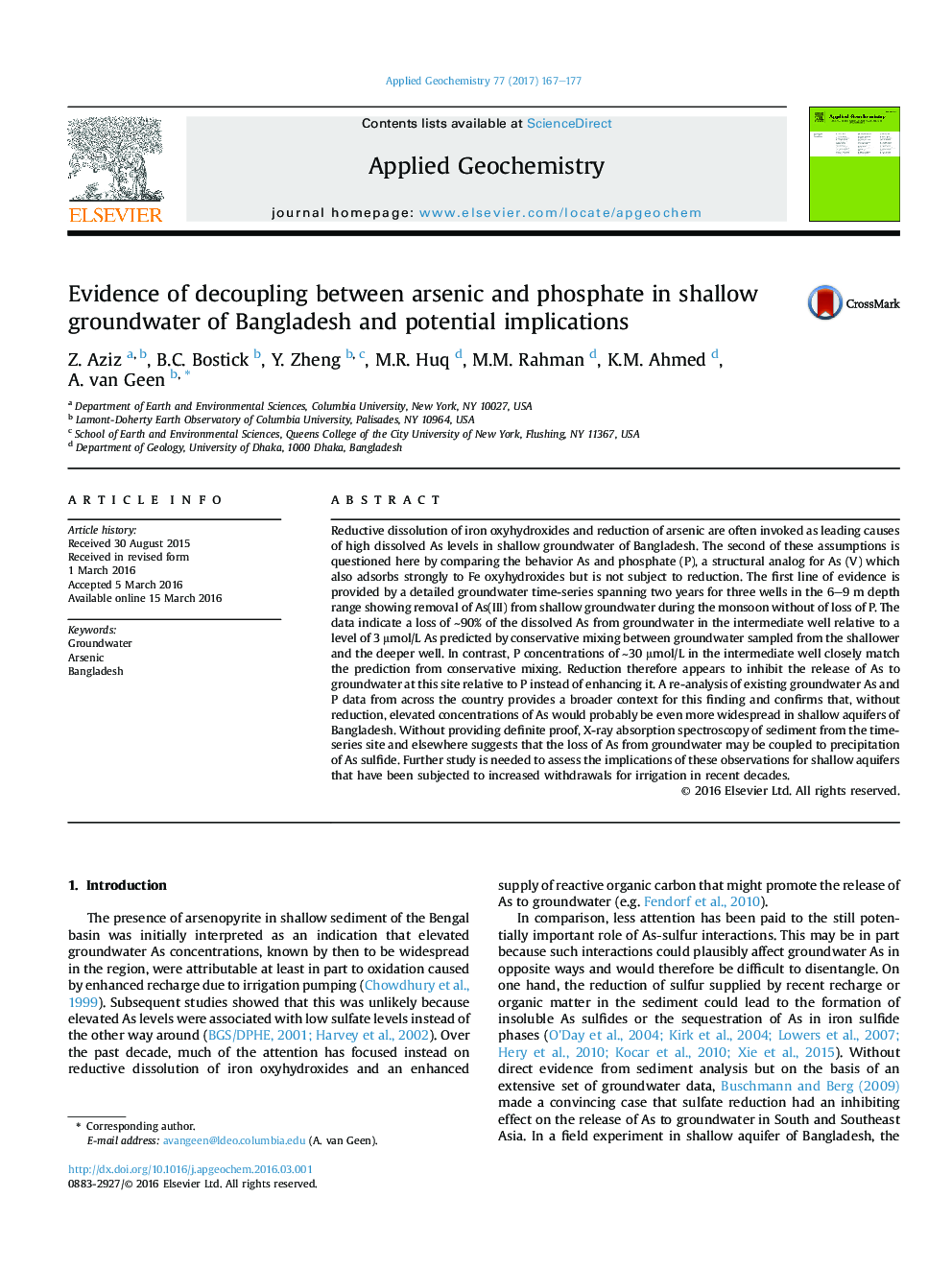| کد مقاله | کد نشریه | سال انتشار | مقاله انگلیسی | نسخه تمام متن |
|---|---|---|---|---|
| 5752497 | 1620214 | 2017 | 11 صفحه PDF | دانلود رایگان |
- Seasonal variations in shallow groundwater composition were recorded over two years.
- An intermediate well shows seasonal alternation between water from above and below.
- A deficit in groundwater As during the monsoon suggests precipitation as sulfide.
- A broader data set also suggests inhibited As release to groundwater due to sulfide.
Reductive dissolution of iron oxyhydroxides and reduction of arsenic are often invoked as leading causes of high dissolved As levels in shallow groundwater of Bangladesh. The second of these assumptions is questioned here by comparing the behavior As and phosphate (P), a structural analog for As (V) which also adsorbs strongly to Fe oxyhydroxides but is not subject to reduction. The first line of evidence is provided by a detailed groundwater time-series spanning two years for three wells in the 6-9 m depth range showing removal of As(III) from shallow groundwater during the monsoon without of loss of P. The data indicate a loss of â¼90% of the dissolved As from groundwater in the intermediate well relative to a level of 3 μmol/L As predicted by conservative mixing between groundwater sampled from the shallower and the deeper well. In contrast, P concentrations of â¼30 μmol/L in the intermediate well closely match the prediction from conservative mixing. Reduction therefore appears to inhibit the release of As to groundwater at this site relative to P instead of enhancing it. A re-analysis of existing groundwater As and P data from across the country provides a broader context for this finding and confirms that, without reduction, elevated concentrations of As would probably be even more widespread in shallow aquifers of Bangladesh. Without providing definite proof, X-ray absorption spectroscopy of sediment from the time-series site and elsewhere suggests that the loss of As from groundwater may be coupled to precipitation of As sulfide. Further study is needed to assess the implications of these observations for shallow aquifers that have been subjected to increased withdrawals for irrigation in recent decades.
Journal: Applied Geochemistry - Volume 77, February 2017, Pages 167-177
